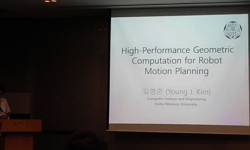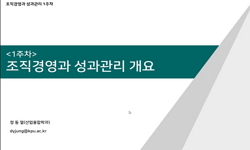Listing can be divided into Initial Public Offering (IPO) and backdoor listing. IPO refers to entry into the market through public offering after having applied for review for listing while backdoor listing signifies immediate listing by non-listed ...
http://chineseinput.net/에서 pinyin(병음)방식으로 중국어를 변환할 수 있습니다.
변환된 중국어를 복사하여 사용하시면 됩니다.
- 中文 을 입력하시려면 zhongwen을 입력하시고 space를누르시면됩니다.
- 北京 을 입력하시려면 beijing을 입력하시고 space를 누르시면 됩니다.

우회상장기업의 상장 후 재무적 특성 변화에 대한 연구 -코스닥시장 우회상장기업을 중심으로- = Empirical Study on Performance of Backdoor Listing in the KOSDAQ Market
한글로보기https://www.riss.kr/link?id=A104546203
- 저자
- 발행기관
- 학술지명
- 권호사항
-
발행연도
2011
-
작성언어
Korean
-
주제어
우회상장 ; 기업상장 ; 코스닥시장 ; 재무적 특성 ; backdoor listing ; IPO ; KOSDAQ market ; performance
-
등재정보
KCI등재후보
-
자료형태
학술저널
- 발행기관 URL
-
수록면
1-26(26쪽)
-
KCI 피인용횟수
0
- DOI식별코드
- 제공처
-
0
상세조회 -
0
다운로드
부가정보
다국어 초록 (Multilingual Abstract)
Listing can be divided into Initial Public Offering (IPO) and backdoor listing. IPO refers to entry into the market through public offering after having applied for review for listing while backdoor listing signifies immediate listing by non-listed company through merger with listed company,without having undergone procedures such as review or public offering.
Studies related to IPO have been pursued over long period of time in diverse range of areas. On the contrary, not much study has been carried out on backdoor listing because of its recent emergence in the market.
we assess the influence of backdoor listing on the investment, financial structure, size of turnover and profitability of company following listing. Such ex post facto performance analysis enabled assessment of ex ante motive for choosing backdoor listing through financial variable result between IPO company and backdoor listed company.
The following are the key analysis results and implications of this Study.
Similar to the outcome of existing studies in both Korea and overseas countries, enables one to verify the fact that IPO is not a method for procurement of funds in the future, as investment expenditure on tangible assets of IPO companies has not increased. In addition, although there is improvement effect on the short-term financial structure as funds raised from public offering flow in, it did not last for long period of time. There was no improvement effect in the size of turnover and profitability following listing, and, thereby clarifying the existing studies that assert the management either chooses public offering when the size of revenue is large and profitability high,or the window dressing is made at the time of public offering of the company.
On the other hand, backdoor listed companies, even with exclusion of merger effect investment on tangible asset illustrated statistically significant increase even after third year following listing.
As backdoor listing is obtaining of effect of listing by voluntarily merging with company that is already listed, it illustrates results that are different from that of IPO with regards to procurement of funds necessary for investment in the future by the non-listed company. In addition, unlike IPO, as there is no influx of funds raised through public offering through backdoor listing, there is no improvement effect in financial structure even at the year of listing, and there is also no improvement effect in size of turnover and profitability similar to the case of IPO companies following listing.
This Study assessed characteristics of each method by comparatively analyzing backdoor listing and IPO. Both of two methods of listing on stock exchange, that is, IPO and backdoor listing, have double-edge of imparting positive or negative effect on the market, and companies select either of the methods in accordance with the companies’ own characteristics. Therefore, it has been clarified that it is important to establish systematic mechanism of drawing both non-listed companies with the strong financial position and listed companies that wish self-relief efforts into healthy market rather than blindly negative viewpoints and regulations on backdoor listing.
국문 초록 (Abstract)
IPO와 관련된 연구는 장기간 동안 다양한 분야에서 연구가 이루어졌다. 반면에 우회상장은 최근에 시장에 출연했기 때문에 많은 연구가 이루어지지 않았다. 본 연구는 상장 이후에 우회상장...
IPO와 관련된 연구는 장기간 동안 다양한 분야에서 연구가 이루어졌다. 반면에 우회상장은 최근에 시장에 출연했기 때문에 많은 연구가 이루어지지 않았다. 본 연구는 상장 이후에 우회상장이 기업의 투자지출, 재무구조, 성장성 및 수익성에 미친 영향을 파악하고자 기존의 IPO에 적용했던 동일한 연구방법을 우회상장에 적용하여 분석하였다. 이러한 사후적 성과분석은 IPO기업과 우회상장기업의 재무적 특성변화의 차이를 통해 우회상장을 선택한 기업은 IPO기업에서 나타나지 않은 다른 특성을 가지고 있는가를 알 수 있다.
본 연구의 주요분석결과와 시사점을 살펴보면 우회상장기업과 비교 대상이 된 IPO기업으로 구분하여살펴보면 우회상장기업은 상장초기에 기업결합효과를 배제하여도 상장 후 3차년도 이후에는 통계적으로유의하게 유형자산에 대한 투자가 증가하였다. 우회상장은 이미 상장된 기업과 자발적으로 결합하여 상장의 효과를 얻는 것이므로 비상장기업이 미래의 투자에 필요한 자금조달과 관련되어 IPO와 다른 결과를 보여주고 있다. 또한 우회상장은 공모자금의 유입이 없으므로 IPO와 달리 상장 초기에도 재무구조의개선효과가 없었고 성장성과 수익성은 IPO기업과 동일하게 상장 이후 개선효과는 나타나지 않았다.
요건충족우회상장기업과 IPO기업을 분석한 결과 또한 전체우회상장기업과 큰 차이를 보이지 않는다.
다만, 요건충족우회상장기업의 경우 전체우회상장기업에 비해 유형자산투자의 기업결합효과가 더 크게나타나고 매출액증가율에 대한 기업결합효과가 더 장기적으로 지속된다는 것을 알 수 있다. 그러나 경상이익률과 자기자본순이익률이 분석기간 동안 음(-)의 값을 나타내 자율적인 구조조정에 따른 수익성 개선효과는 요건충족우회상장기업에서도 나타나지 않았다. 또한 IPO요건을 충족한 기업의 분석표본이 적고 편차가 크기 때문에 통계적인 유의성이 매우 낮은 것으로 나타났다.
참고문헌 (Reference)
1 최운열, "우회상장은 IPO와 무엇이 다른가?:코스닥기업을 중심으로" 20-24, 2006
2 김석태, "역인수합병기업의 특성과 동기에 관한 연구" 6-9, 2005
3 김희석, "기업공개의 결정요인에 관한 실증연구" 16 (16): 173-195, 2001
4 김종일, "기업공개 결정요인에 대한 사후적 실증분석: 코스닥시장 상장기업을 중심으로" 한국회계학회 32 (32): 89-122, 2007
5 Pagano, Marco, Fanetta, "Why do companies go public?:An empirical analysis" 53 : 27-64,
6 Miller, E, "Uncertainty and Divergence of Opinion" 32 (32): 1151-1168, 1977
7 Degeorge, Francois, "The reverse LBO decision and firm performance: Theory and evidence" 48 : 1323-1348, 1993
8 Jain, Bharat A, "The post-issue operating performance of IPO firms" 49 : 1699-1726,
9 Ritter, Jay R, "The costs of going public" 19 : 269-281,
10 Bruner,Robert F, "The Use of Excess Cash and Debt and Debt Capacity as a Motive for Merger" 23 : 1988
1 최운열, "우회상장은 IPO와 무엇이 다른가?:코스닥기업을 중심으로" 20-24, 2006
2 김석태, "역인수합병기업의 특성과 동기에 관한 연구" 6-9, 2005
3 김희석, "기업공개의 결정요인에 관한 실증연구" 16 (16): 173-195, 2001
4 김종일, "기업공개 결정요인에 대한 사후적 실증분석: 코스닥시장 상장기업을 중심으로" 한국회계학회 32 (32): 89-122, 2007
5 Pagano, Marco, Fanetta, "Why do companies go public?:An empirical analysis" 53 : 27-64,
6 Miller, E, "Uncertainty and Divergence of Opinion" 32 (32): 1151-1168, 1977
7 Degeorge, Francois, "The reverse LBO decision and firm performance: Theory and evidence" 48 : 1323-1348, 1993
8 Jain, Bharat A, "The post-issue operating performance of IPO firms" 49 : 1699-1726,
9 Ritter, Jay R, "The costs of going public" 19 : 269-281,
10 Bruner,Robert F, "The Use of Excess Cash and Debt and Debt Capacity as a Motive for Merger" 23 : 1988
11 Bradley, M., "The Rationale Behind Interfirm Tender Offers: Information or Synergy" 11 (11): 1983
12 Chang,Saeyoung, "Takeovers of Privately Held Targets,Methods of Payment,and Bidder Returns" Ⅷ : 1988
13 Catalyst, "Reverse Take-Overs and Qualifying Transactions" Catalyst Corporate Finance Lawyers 2000
14 Gleason, K. C., "Reverse Mergers:Alternative For Obtaining an Exchange Listing, or Mechanism for Wealth Expropriation" Bentley College 2002
15 Grossman, S., "On the Efficiency of Competitive Stock Markets Where Traders Have Diverse Information" 31 : 575-585, 1976
16 Chemmanur, Thomas, "Information production, private equity financing, and the going public decision, Working paper" Columbia University 1995
17 임병균, "IPO 주식의 장단기 성과와 IPO 기업의 상장 전후 영업성과" (18) : 235-268, 1998
18 Boehmer, E., "Event Study Methodology Under Conditions of Event -Induced Variance" 1991
19 Collins, D., "Equity Valuation and Negative Earnings:The Role of Book Value of Equity" 74 : 29-61, 1999
20 Kimberly C. Gleason, "Backing into being public:an exploratory analysis of reverse takeovers" 12 : 54-79, 2005
21 Arellano-Ostoa, "Augusto and Sandro Brusco, Understanding Reverse Mergers: A First Approach" Universidad Carlos Ⅲ de Madrid 20-24, 2002
동일학술지(권/호) 다른 논문
-
일본 지진이 우리나라 주식시장과 채권시장에 미친 영향에 관한 실증적 연구
- 글로벌경영학회
- 임병진
- 2011
- KCI등재후보
-
- 글로벌경영학회
- 김홍
- 2011
- KCI등재후보
-
재무분석가 분석보고서의 유형별 정보효과 -개별분석보고서와 복수분석보고서를 중심으로-
- 글로벌경영학회
- 임태균
- 2011
- KCI등재후보
-
9․1 부동산 세제 개편방안이 채권시장과 주식시장에 미친 영향에 관한 연구
- 글로벌경영학회
- 김태정
- 2011
- KCI등재후보
분석정보
인용정보 인용지수 설명보기
학술지 이력
| 연월일 | 이력구분 | 이력상세 | 등재구분 |
|---|---|---|---|
| 2026 | 평가예정 | 재인증평가 신청대상 (재인증) | |
| 2020-01-01 | 평가 | 등재학술지 유지 (재인증) |  |
| 2017-01-01 | 평가 | 등재학술지 유지 (계속평가) |  |
| 2015-02-27 | 학회명변경 | 한글명 : 한국국제경상교육학회 -> 글로벌경영학회영문명 : Korea Academy of International Business Education -> Academic Society of Global Business Administration |  |
| 2015-02-27 | 학술지명변경 | 한글명 : 國際經商敎育硏究 -> 글로벌경영학회지외국어명 : International Business Education Review -> Global Business Administration Review |  |
| 2013-07-29 | 학회명변경 | 영문명 : 미등록 -> Korea Academy of International Business Education |  |
| 2013-01-01 | 평가 | 등재학술지 선정 (등재후보2차) |  |
| 2012-01-01 | 평가 | 등재후보 1차 PASS (등재후보1차) |  |
| 2011-01-01 | 평가 | 등재후보학술지 유지 (등재후보1차) |  |
| 2010-01-01 | 평가 | 등재후보 1차 FAIL (등재후보1차) |  |
| 2008-01-01 | 평가 | 등재후보학술지 선정 (신규평가) |  |
학술지 인용정보
| 기준연도 | WOS-KCI 통합IF(2년) | KCIF(2년) | KCIF(3년) |
|---|---|---|---|
| 2016 | 0.63 | 0.63 | 0.6 |
| KCIF(4년) | KCIF(5년) | 중심성지수(3년) | 즉시성지수 |
| 0.53 | 0.44 | 0.53 | 0.16 |




 스콜라
스콜라




